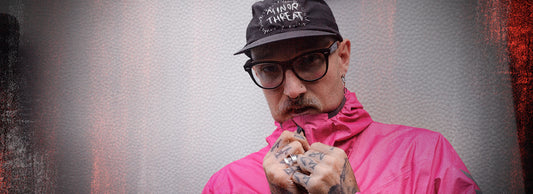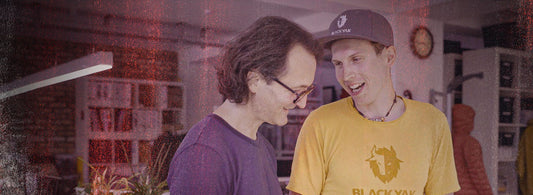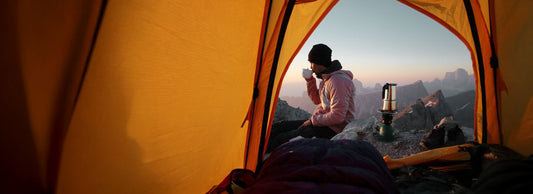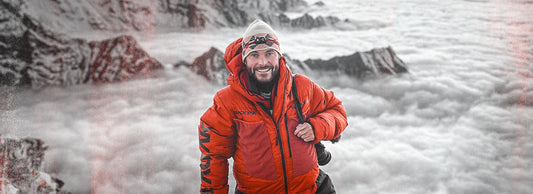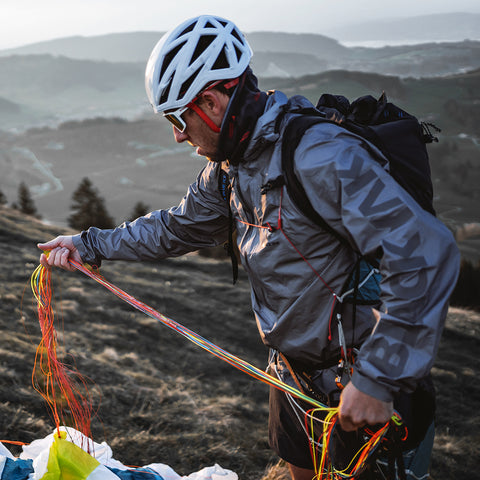In spring the ski touring season really starts.
The temperatures rise, the days become longer again, and the snowpack becomes more stable.When there is enough snow on the glaciers in spring so that most of the crevasses are closed, the alpine ski touring season begins. The enjoyment of downhill skiing is also not neglected during spring ski tours. There are descents in every type of snow.
From the finest powder in the northern slopes to the noble firn on the sunny slopes.

But how should I plan my spring ski tour? First, I should ask myself the following questions:
- Do I want to ski powder or firn on the descent?
- Are there any daytime warming conditions on my ski tour that could cause me problems in the afternoon? Such as a narrow valley with sunlit slopes?
- What should I wear and what material should I take with me?
- What risks should I pay special attention to?

Let's start with the planning.
Firn or powder?
First, let's take a closer look at planning with powder snow. With powder snow, there is usually only one exposure to consider in the spring, unless it has freshly snowed. Sector North! Sector north refers to all exposures that are oriented to the north and therefore receive little sunlight (from northeast to north to northwest). Of course, the stability of the snowpack must be checked and assessed, and only when you are sure, you can enter the slope. Just as you should do on any slope!
With firn, the whole thing becomes a bit more complicated. One must not be too early and not too late on the way. If you are too early, the snow is still very hard and has not yet firned. If you are too late, the beautiful firn has turned into deep wet snow, which is very difficult to ski and can be dangerous.
The rule of thumb is that a slope needs about two to three hours from the first rays of sunshine to the perfect firn. Of course, you must pay attention to some other things that can speed it up or slow it down. Like temperature, partly the cloud cover and wind.
Roughly, this means for planning, with a powder descent I am less restricted in terms of daytime, with firn I must plan the ski tour very well. Mostly this means for me, an early start.

The daytime warming plays a big role in a spring ski tour. As everyone should know, with higher temperatures and more sunlight, there is more soaking of the snowpack. From this, large to very large avalanches can go off on their own. Therefore, the tour planning must be very precise and perfectly planned from the starting point to the end point.
What should I wear on a spring ski tour? The best is exactly the right :-)
Depending on personal feelings of a GORE TEX pants (e.g. the men's Thulagi Gore-Tex 3L PRO SHELL PANT) or a slightly warmer ski touring pants like the (eg Saltoro Hybrid ski touring pants).
On top exactly the same.
If it is still a bit cooler at the beginning of the tour, an insulated jacket is recommended, which can be taken off after a while (e.g. the Langar Hooded Insulation Jacket). Underneath, depending on the temperature, a midlayer (like the Chumbu ¾ Fleece) or just a long-sleeved shirt (like our Gurla Merino Baselyer) is worn and if necessary, a vest (e.g. the Langar Insulation Vest) over it. Make sure you have a spare shirt in your backpack so you can change your sweaty shirt for a dry one at the summit.
What equipment should I always have with me?
A must for a ski tour of any kind is the emergency equipment:
- LVS device (avalanche transceiver)
- shovel
- probe
Likewise, you should always carry a first aid kit and a bivy sack, in case of an accident.For spring ski tours, crampons are often necessary.
If the ski tour takes place on the glacier, glacier equipment is obligatory (harness, rope, carabiners, crevasse rescue equipment).
What special dangers should I pay special attention to? Actually, on all dangers on which we should always pay attention when ski touring!
- avalanche situation
- own ability (do not overestimate yourself)
- steepness and danger of falling in hard snow
- slope of the terrain like narrow valleys
Finally, I wish you beautiful and especially accident-free ski tours in spring!
And who is unsure about ski touring should go together with a certified mountain and ski guide or take a ski touring course.

David Widauer
state certified Mountain and ski guide
state certified Ski instructor



